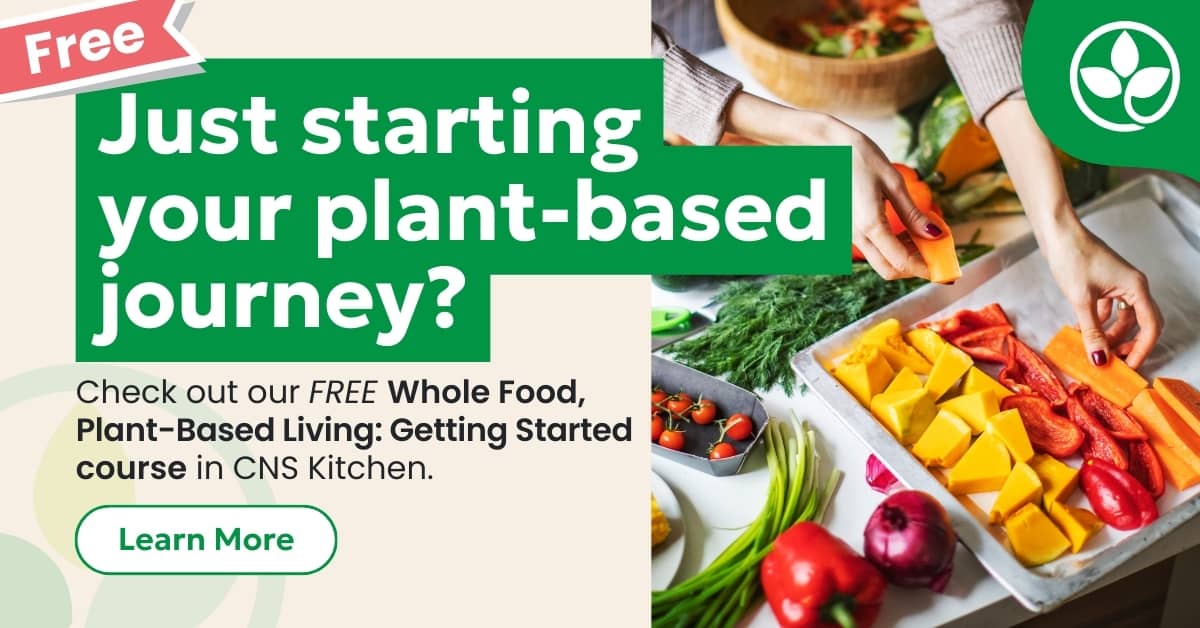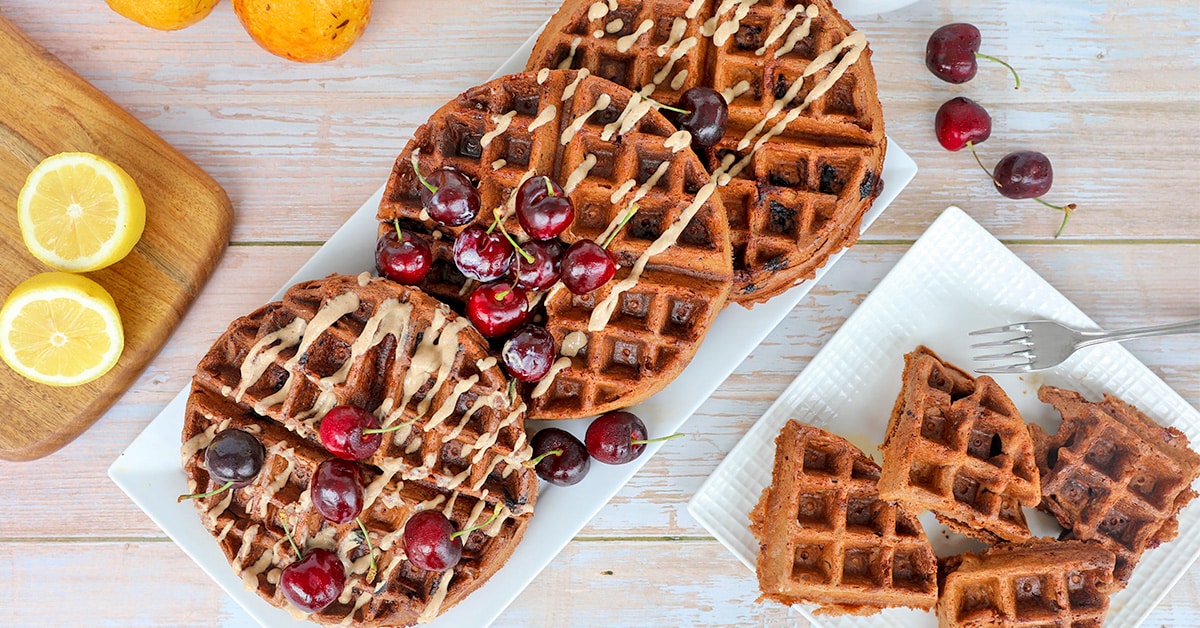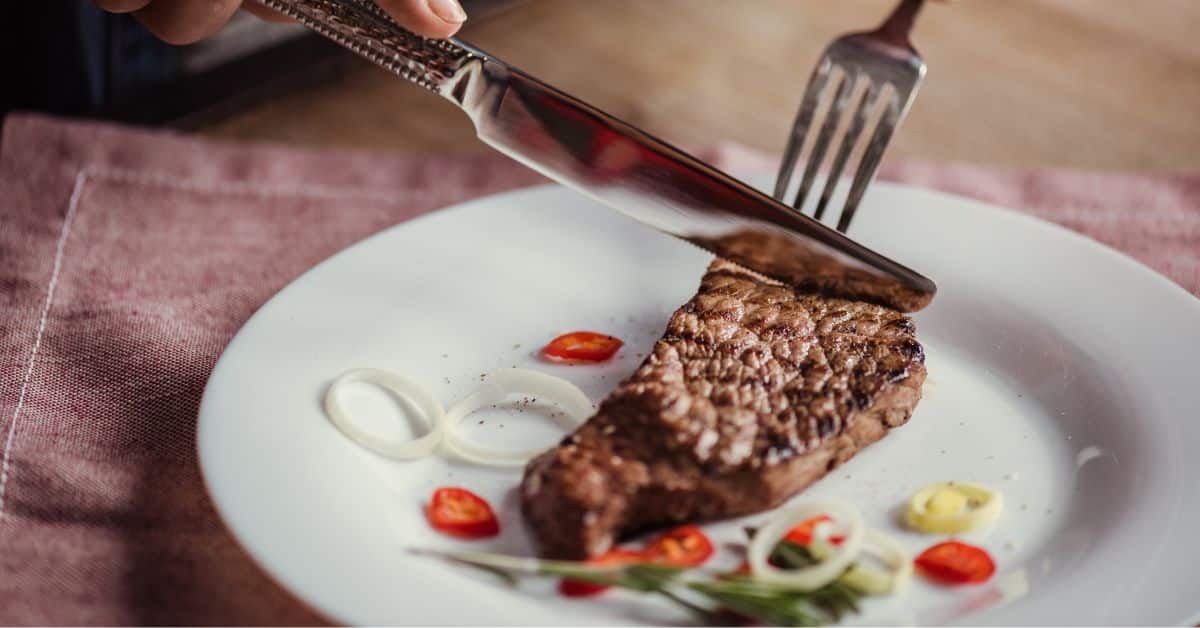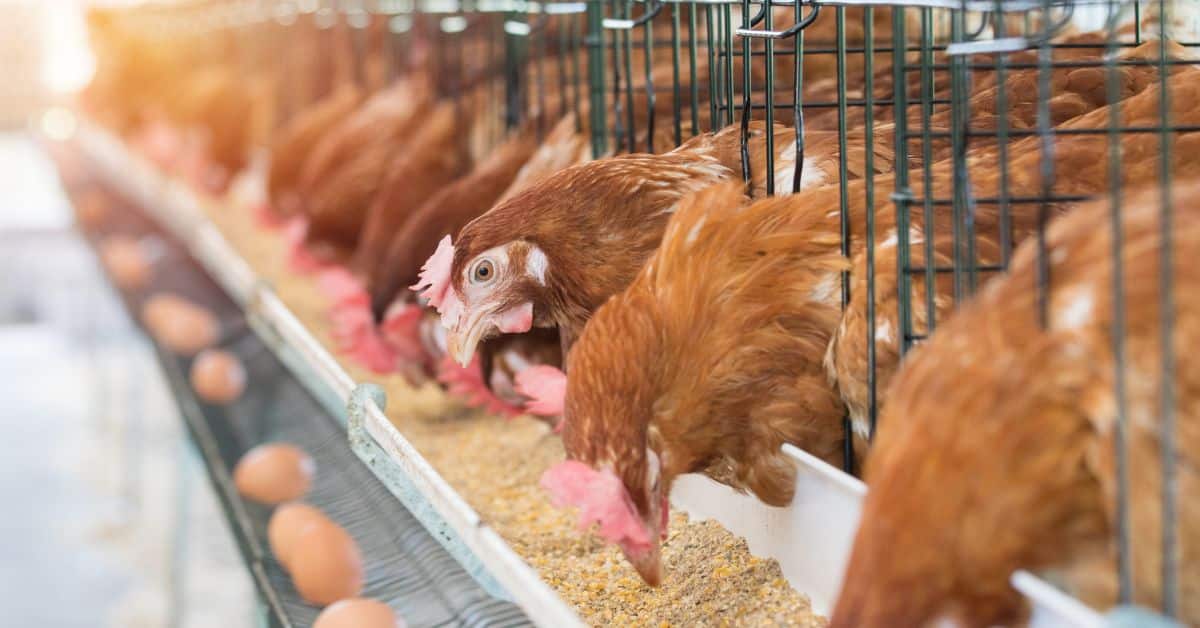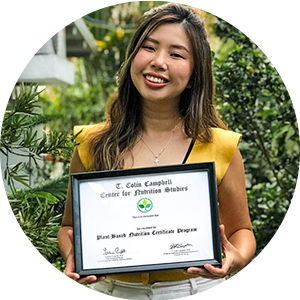
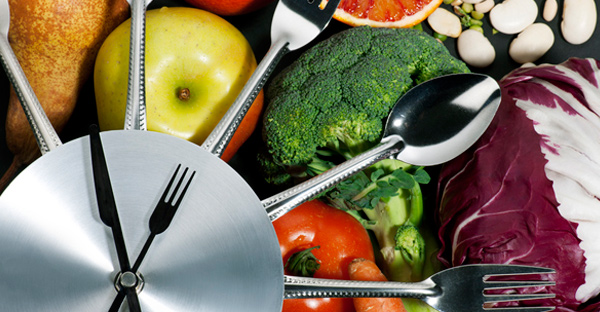
Many people on the edge of embracing a whole foods plant-based diet erroneously believe that it’s time-consuming to prepare healthy food. I’ve personally enjoyed being plant-based for over 14 years. While working long hours at NASA on two satellite missions and later on an organic farm, I developed some routine tips and tricks that served me well in maintaining a healthy lifestyle without spending too much time in the efforts.
This article is packed with time-saving tricks for enjoying a diet rich in salads, cooked vegetables, grains and beans. Before we dive in, here are 6 general plant-based cooking tips:
Plant-based cooking tips
Save cut vegetables, skins, etc., in your freezer or refrigerator to make vegetable broth to add to soups, sauces, stews, or stir-fries. Making vegetable broth is easy in a slow cooker! Keep reading for my delicious and Simple Slow-Cooked Spicy Kale and Beans recipe.
Save leftover vegetable steaming water, marinades, and sauces, for use in soups and salad dressings.
When cooking grains, make extra to use in salads, stir-fries and soups. You can also make a big portion of grains and freeze serving size portions of the grains in plastic bags.
Canned beans save a lot of cooking time, but you should always rinse canned beans to reduce the amount of sodium in them.
Store extra cooked beans in freezer in plastic bags, small repurposed food containers (like the ones for hummus) or jars. It’s quick and easy to add small portions of frozen beans to soups, sauces, stews, and stir-fries.
Pureed cooked beans can be part of an excellent sauce for cooked vegetables and/or pasta, or in a salad dressing.
Salads in a Snap
One of the most important changes I made in my diet decades ago was to incorporate more fresh salads into my food routine. Having a fresh salad (preferably every day) enhanced my overall vitality and fostered my stomach’s biome, helping me to be able to consume beans more often without undesirable side effects (!). Here are some ways to make it easier to eat more salads:
Quick Salad Trick #1: When not using pre-washed salad mixes, wash and spin-dry enough greens and lettuces for at least three days worth of use.
Store the greens in between paper towels in a suitable container or large plastic bag in the fridge. The greens will keep longer by remaining dry.
Quick Salad Trick #2: Wash, dry and cut enough raw vegetable toppings for three or four salads in advance and store each ingredient separately in sealable containers.
This can include summer squash, radishes, celery, and grated or sliced carrots. It’s easy to fall into the time sink of trying to prepare everything from scratch for each salad. By preparing ingredients all at once in advance, you can quickly assemble a salad in a few minutes.
Quick Salad Trick #3: Make your own oil-free dressing in a “spent” mustard bottle or other nearly-empty condiment container.
There weren’t many no-oil or no-fat salad dressing recipes available years ago, but now they are plentiful when searched for on the internet. And making your own is easy! In the lidded container you choose, add some vinegar (usually balsamic, maybe seasoned rice), a little garlic powder, maybe some nutritional yeast, sweetener of choice (can also blend some soaked raisins and add that to the mix), sometimes a little hot sauce, water or left-over broth (all added to taste). Close and shake the container vigorously until all is well blended. Make about a cup for the week. Adding different spices (curry, cumin, dried herbs, and so on) provides for variety and different taste experiences.
Streamlined Vegetable Cooking
When I worked on an organic farm, the hours were long and quite physical, especially during harvest season. Believe me, the last thing I wanted to do after a 12 hour day in the field was spend a lot of time cooking. I took advantage of the abundant harvest in two ways: roasting vegetables and mastering quick stir-fries.
Vegetable Cooking Tip #1: Cut, coat, roast and add to a variety of dishes
I can’t think of any vegetable that can’t be roasted! Roasting concentrates the flavor of veggies in a marvelous way. I’ve even roasted okra (delicious) and cabbage (in large wedges, it’s delightful).
The technique is pretty simple:
- Cut desired vegetables into like-sized “chunks” based upon their density (example: cut carrots a little smaller than zucchinis).
- Line a ceramic casserole dish or a non-stick cooking sheet with non-stick foil (one side is aluminum, the other is non-stick). Foil over parchment paper being that it can handle higher temperatures than parchment paper, foil can be molded to fit the dish or sheet, and foil can be re-used.
- Turn oven on to about 400 – 450 degrees F.
- Put your marinade of choice (usually just balsamic vinegar, smidgen of tamari and water) into a “spritzer” and spray the vegetables.
- Dusted the spritzed vegetables with garlic powder or a favorite “multi-spice no salt” mixture (Dash has several varieties and Trader Joe’s 21-Spices is superb). The spices will adhere nicely to the spritzed vegetables.
- Cook for 30 to 40 minutes depending upon the vegetables chosen until they are brown and nicely caramelized.
- Add the roasted vegetables to pasta with your favorite sauce, serve on rice, or use on salad.
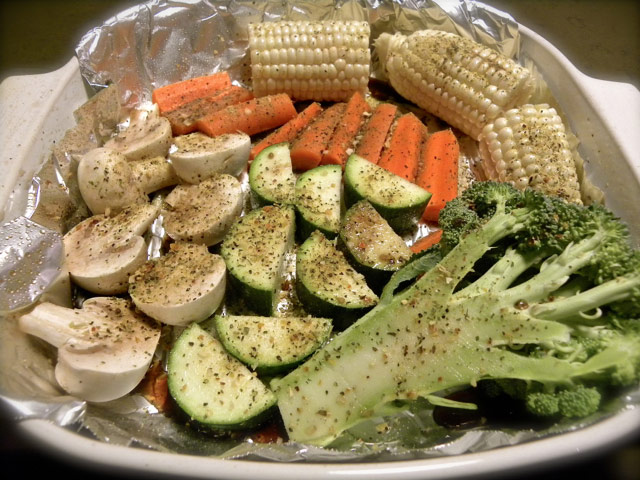
Vegetable Cooking Tip #2: Stir fry vegetables in broth, layering vegetables according to density
Cooking without oil is easy when you know of alternatives. Vegetable broth, soy sauce, vinegar, water and other liquids can be used separately or in combination to replace oil.
- Figure out what grains you would like to eat with your stir-fry. If cooking brown rice, barley, or other grains that take more than 20 minutes, start that process first. If cooking fast grains such as quinoa or millet, you can make your stir-fry first.
- Pre-cut all your veggies and other ingredients.
- Heat onions, garlic and maybe red pepper flakes in vegetable broth or other oil-free liquid.
- Add the more dense vegetables first, and then gradually add the less-dense layers.
- Top it off with chopped greens. Once the greens start to wilt, then stir the pans ingredients until cooked to desired texture.
- Add a half-cup or more of liquid mixed well with 1 or 2 tablespoons of cornstarch or arrowroot powder, stir the fry a few times, let simmer a few minutes, turn off heat, and let steam a few minutes.
- Be creative! Broiled sliced polenta or a baked potato are uncommon but great toppings for your successful stir-fry.
Bonus tip: Layer sliced mushrooms above other vegetables so their juices will drip down to cook the other vegetables.
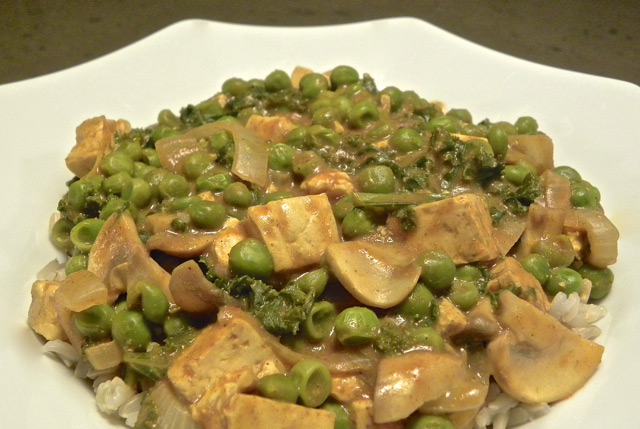
The Mighty Slow Cooker
Invest in a slow cooker. Crockpots are quite inexpensive. With them you can prep most soups, stews, curries, and more, in 15 to 20 minutes prep, and let it cook while you are doing other activities. Prep a meal in the morning or during lunch. When you’re back from work, quickly prepare a salad, grains, baked potato, or pasta, to accompany the slow-cooked entree.
Here’s a Simple Slow-Cooked Spicy Kale and Beans recipe using my crockpot layering technique for a 1.5 qt. small crockpot:
- 4 cups packed with chopped raw kale
- 1 cup rinsed frozen or canned corn (for the “crunch” factor of the corn)
- 15 oz can of cooked pinto beans (or beans of choice) drained and rinsed
- 1 tsp dried garlic powder
- 1 tsp curry powder
- 1 tsp cumin powder
- ⅓-1 cup of chopped fresh basil (or 2 Tbsp of dried basil)
- 1 small diced habanero pepper (or 1 Tbsp of dried red chili pepper flakes, or amount of pepper of heat-level of choice)
- 28 oz can of crushed or chopped tomatoes
- 2 Tbsp or more of tomato paste
In this layering technique, the liquid flows DOWN through the spices, heat, flavors the beans, and reduces the kale.
- Turn the slow cooker on “high”.
- Add 3 cups of the chopped kale to the bottom of the cooker. The kale on the bottom it will shrink a lot.
- Add the ingredients in the order they are listed except for the tomato paste and remaining cup of kale.
- After about 3 hours on HIGH or 6 hours on LOW, stir a few times.
- Add the remaining cup of chopped kale and 2 Tbsp or more of tomato paste, depending upon how crazy you went with the chopped peppers! You can use tomato paste or cornmeal to thicken sauces, stews, and soups.
- Stir and cook another two hours until done to taste.
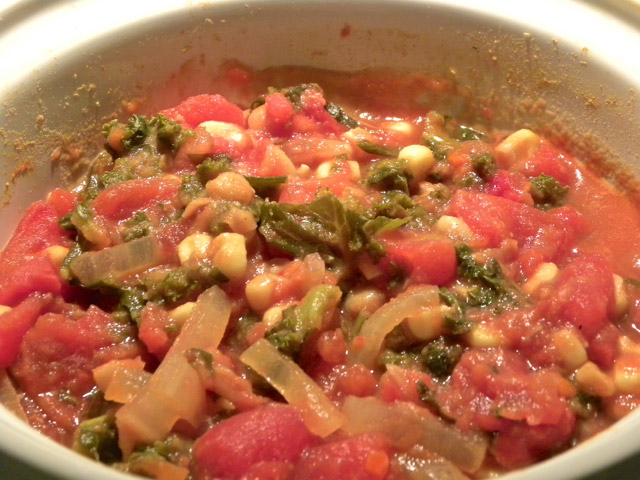
I hope that the above tips, tricks, and techniques, will help you relish and enjoy your journey towards incorporating fresh and delicious REAL food in your lifestyle, tantalizing your taste buds with nature’s best. A small investment in time and effort will yield great results and enable you to take full advantage of the amazing protective and restorative nature of a whole food, plant-based diet.
Copyright 2024 Center for Nutrition Studies. All rights reserved.
Earn Your Plant-Based Nutrition Certificate
Join over 20,000 students who have improved their health, learned new skills, and even inspired career changes.
Program Overview
- 23,000+ students
- 100% online, learn at your own pace
- No prerequisites
- Continuing education credits
